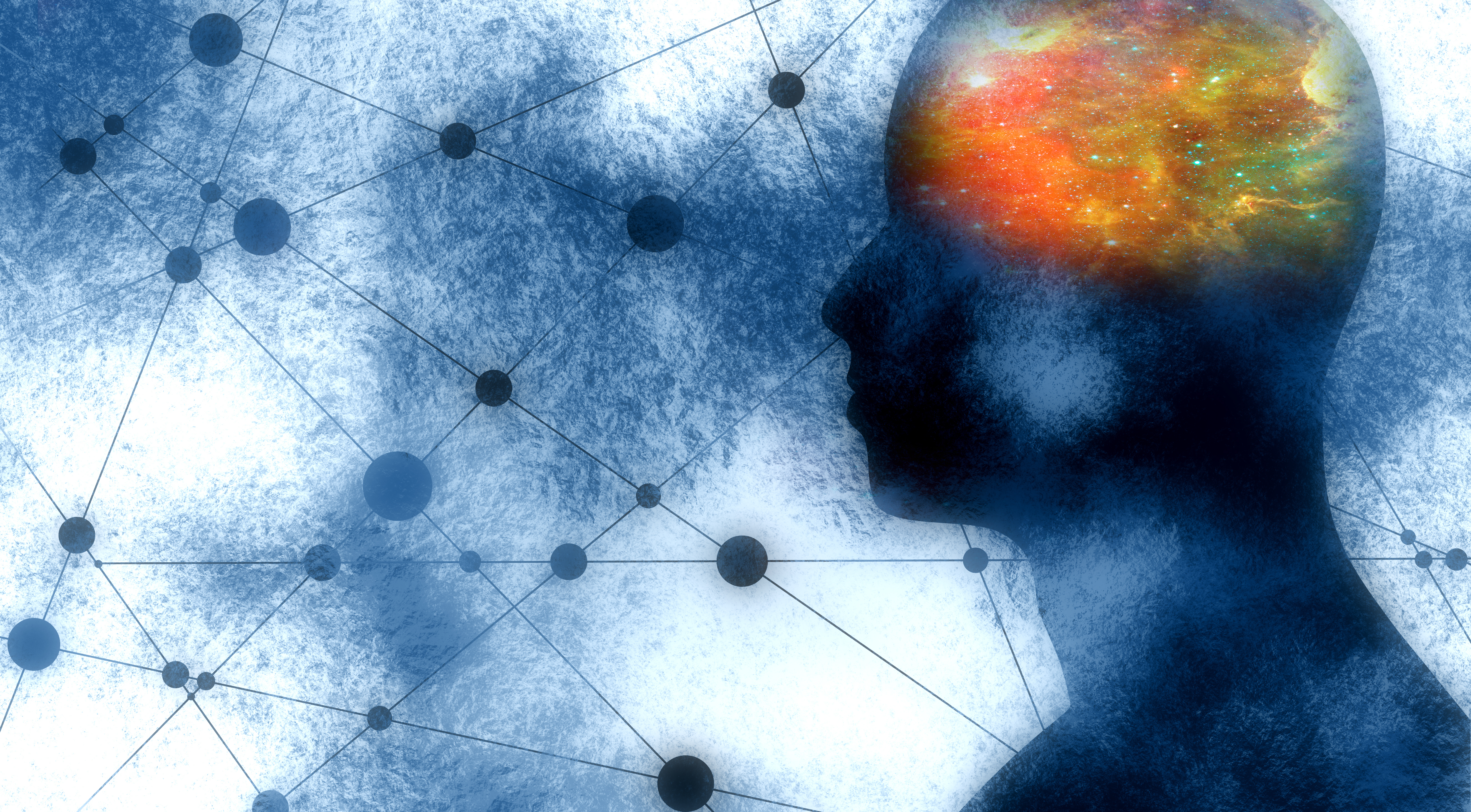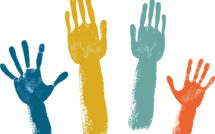
Emergency Medicine and Refugee Mental Health: Can Swiss ER Doctors Reduce Gaps in Mental Healthcare?

This is part of our special feature on Forced Migration, Displacement, and the Liberal Arts.
I stood and watched as the young Swiss doctor introduced herself to the male patient in his early twenties from Somalia. She then introduced me as a “visiting doctor from New York.” She asked if it was okay for me to stay in the room during the exam. He looked at me, smiling, and said “Sure. New York. I have always wanted to see New York.” They quickly turned back to each other and determined that among their collective knowledge of languages, semi-fluent English would suffice for this exchange. The doctor asked how she could help and he showed her skin ulcerations on his limbs. After a quick examination, she told him that it looked like scabies. She did an impressive job explaining the condition and how it is common to develop an infection from scratching one’s skin. The doctor assured him that he would be okay and that she could give him some medication to help with the mites and the itching. She then asked if there was anything else she could help him with.
The patient, still sitting, his arms outstretched, hands gripping the edge of the table, lowered his head for a second, looked up, and then down again. He said he had been having memories. Bad memories. Memories from his home country. Memories from the journey. Memories that interfered with his sleep and concentration. Sometimes beer helped. The doctor seemed to be digesting all of this and then suggested to him that it might help her to know about these memories.
With great insight and clarity, he spoke of how he had been forced to join al-Shabaab and was being trained as a bomb maker. He described feeling trapped and terrified. He somehow convinced those in the organization that he would bring them back money if he could visit his mother. After stopping by his mother’s house to say goodbye, he fled. He first went to Yemen, possibly crossing the Gulf of Aden to a port in Yemen. It is estimated that over 90 percent of the refugees in Yemen are Somali [1]. He seemed to indicate that he was aware of instability and dangers in Yemen. He had hoped to find safety and a sense of community there, but due to the ongoing war and lack of economic opportunity, he crossed back over the Red Sea, travelled to Sudan, and then eventually to Libya. Once there, he was sent to a detention center. What he thought would be a stable refugee camp turned into the hardest thing he had ever endured, but he did not want to elaborate. Recent reports by groups like Medecins Sans Frontieres have documented dire conditions – lack of food and water, overcrowding, and no protection from the weather. Other reports have similarly documented a grave humanitarian crisis in the detention centers – refugees living in darkness, the rampant spreading of TB, slavery, forced, labor, and torture [2, 3]. The International Rescue Committee (IRC), one of the few organizations offering medical care to refugees in the detention centers, recently suspended their work due to staff safety concerns [4]. He managed to escape, boarding a raft to Italy, where he worked in a kitchen, and then eventually made his way to Switzerland.
The doctor asked him why Switzerland and he said that he missed his family but he was hoping to find a country that would allow him to attend school and work. She remarked on his strong English skills and he said that he had taught himself primarily by reading a dictionary. I had been shadowing her all day and I could tell his story moved her. She didn’t rush him out of the examination area. The symptoms of post-traumatic stress were discussed, although I don’t recall if she used that term. They talked about things he might do instead of drinking to help with the memories.
Then, they said goodbye. No prescription or referral to a psychiatrist, psychologist, or social worker. The doctor was clearly well trained and Switzerland is often ranked as having one of the best healthcare systems in the world [5].
I was confused as to why there was no treatment plan for his mental health issues, and although having just finished a long rotation, she was kind enough to discuss this with me. From her perspective, she said even in a country with considerable resources and good healthcare, there were gaps and obstacles to accessing mental health care. She said, for people in the process of seeking asylum, this is even more challenging. Although it is difficult to find concrete data on mental health treatment access, mental health professionals, such as Dr. Naser Morina, Senior Research Associate at the Department of Consultation-Liaison Psychiatry and Psychosomatic Medicine [6], has indicated that it can take individuals up to one year to see a psychologist or psychiatrist in his clinic, which is dedicated to treating refugees [7]. Further adding to the treatment gaps in Switzerland and elsewhere in Europe, is the Dublin Regulation, in which an individual seeking asylum may be returned to the country through which they first entered the EU. Not surprisingly, asylum seekers, concerned about the status of their applications are reluctant to publicly disclose the need for mental health services out of concern of deportation or impacting the outcome of their cases.
Other issues contribute to the barriers too. Lack of translators, mental health professionals who are not trained to assess and treat patients suffering from the types of traumas often experienced during migration, as well as cultural barriers and stigma. As for the doctor I was shadowing, she felt that brief education, guidance, and reassurance were probably going to be as helpful as suggesting he make an appointment to see a psychiatrist. She was doubtful she could find a trauma-informed therapist for him in the near future. Much of what she said may have been true, but I think we both were left sitting with the feeling that he did not get the care he needed. Even in high-resourced countries like Switzerland, without adequate training, culturally-informed practices, and clear systems for delivering treatment, patients, especially those we are members of marginalized communities will disproportionately experience mental health burdens.
This interaction, like others I witnessed two years ago during a Fulbright Fellow in Switzerland, shed light on the complex mental health needs of individuals who have had to migrate to Europe due to political persecution, war, violence, and profound economic hardship. Several years ago, my now colleagues in one of the main urban university hospitals in Switzerland, the Inselspital, University of Bern Emergency Department, noticed what appeared to be an increase in visits to the Emergency Department (the ED) by patients seeking asylum in Switzerland. Among the patients that they had been seeing many of them had been complaining of vague “non-specific” pains and discomfort. There was a growing number of patients complaining of headaches, GI issues, diffuse pain, and fatigue.
The ED in Bern is quite different than any I have been to in the US. The ED is immaculate and the waiting area never seems to have more than five people waiting to see a doctor and patients are seen within twenty minutes of arrival. There are three emergency rooms at the Insel (adult, child, and labor) and there is a “fast-track unit” in the adult ED for patients that do not have acute illnesses, led by Dr. David Srivastava [8]. When patients are seen in the ED complaining of pain or other difficult to identify somatic complaints, they undergo extensive assessment and, if indicated, they may also receive some kind of imaging, such as MRI or CT scan. In many cases, however, the results of the imaging revealed no organic basis and the clinical assessments did not lead to a specific diagnosis.
Dr. Aris Exadaktylos, the head of the ED, began to discuss these observations with his team and with Srivastava and others, initiated the systematic review of medical chart records from 2012-2016 [9]. After a careful review, consistent with their clinical observations, there had been a sharp rise in ED visits among patients seeking asylum. In fact, patients with asylum seeking status increased by 45 percent during this period. The patients were primarily from Somalia, Eritria, and Syria. Many of the individuals seeking care in the ED were referred to psychiatry and although a majority of patients were stated they were in “urgent need of a consultation” the average triage level did not suggest the patients were experiencing an acute medical condition. Interestingly, although there are not many studies on the subject, there appears to be growing utilization of ED in Europe by individuals seeking asylum for non-acute medical issues [10].
These findings led the team in Bern to create the ED Management and Migration Medicine research and treatment group [11], led by Dr. Srivastava. In partnership with the Swiss Hospitals for Equity [12], they began looking more deeply into the use of the ED among patients seeking asylum, with a particular focus on mental health. I was fortunate to have been invited to work on these studies, which will hopefully offer greater clarity about the specific mental health conditions asylum seekers are most commonly presenting with and the causes underlying these factors. We are also carrying out several studies to understand patterns of ED usage and ways we may be able to use the ED to engage members of the refugee and migrant communities to inform and increase access to culturally appropriate care.
Over the past two years, we continue to examine health visit records from the ED. On a macro-level, we are able to see general differences in the types of illnesses, referrals, and levels of acuity are observed in refugee and migrant patients compared to patients without a recent migration background. For example, a recent analysis of records showed that patients from North Africa were more likely to be male, younger, and to be referred for mental health consultation [13]. Additionally, we have recently completed analyzing findings indicating that refugees and migrants appear to be more likely to be admitted to the ED for acute alcohol intoxication. Such findings are helping to inform the development of public health outreach initiatives and prevention programs to provide greater support especially to young men experiencing mental health and alcohol issues.
In an effort to deepen and refine the understanding of the mental health concerns refugees and other migrants are experiencing in the ED, we have also launched a study using digital tablets in which patients who are not in need of acute attention are asked to complete a short survey about their well-being. The surveys have been translated into five languages and translation services have been made available. These questionnaires will hopefully add much needed data to the most common symptoms of psychological distress and factors associated with these symptoms. The findings will then lead to an ongoing study following patients over time.
We have also recently completed a study interviewing asylum seeking patients about their knowledge of the healthcare system in Switzerland. For those patients that have been in the country for less than a year, there was almost no knowledge about how the system works. Many of those patients interviewed also stated that they sought care in the ED over seeing a General Practitioner because they had either previously had a bad experience or were concerned they would. These findings underscore to the potential of the ED as a unique space in which medical professionals can work with local communities around healthcare and perhaps more community building in general.
Although not in the ED, there are a number of innovative partnerships taking place in Switzerland that may help to improve well-being and reduce barriers to mental health. These are approaches that are happening in connection with and informed by members’ refugee communities. Dr. Morina, from Zurich, is working on the roll-out of an EU-wide mental health treatment for Syrian refugees called the Strengths Project supported by the World Health Organization [14]. The Strengths Project will train local community leaders to provide mental healthcare for fellow refugees. The approach is cost-effective, delivered within the community, and potentially very scalable. In another direction, groups such as Powercoders are training refugees to become coders. The co-founders of the company, who have tech-backgrounds, recognized gaps in entry levels IT jobs in Switzerland. They raised funds to provide fully-funded immersive training in coding over three months followed by internships and full-time positions in the IT sector. Although Powercoders has not studied the mental health outcomes of their program, it would not be surprising if their work is leading to greater wellbeing as other studies have shown that economic empowerment can prevent the development of mental health issues [15].
Another key gap in healthcare is training. There are myriad challenges associated with providing adequate care to refugees seeking medical care in general and mental healthcare in particular [16]. Although it has been recognized that greater training needs to happen at the level of healthcare professionals, a recent initiative in the US (the Consortium on Forced Migration, Displacement and Education) funded by the Mellon Foundation aims to introduce undergraduate college students to a wide range of complex issues associated with forced migration. One part of that grant will begin this summer, when the Consortium schools – Vassar, Bard, Bennington, Sarah Lawrence College, and The New School, will send undergraduate and graduate students to work in the Bern ED to help carry out research while also volunteering with local agencies. Although this will be the first time many of these students will work in Emergency Medicine and mental health, their liberal arts training will provide them with observational, analytic, and critical thinking skills to help advance this work. Their liberal arts background will prepare them for advances in global mental health, which underscore the need for mental health researchers to collaborate and learn from students and scholars in the arts and humanities. For instance, anthropological methods are critical for understanding local idioms, representation, and practices around health, including mental health. Moreover, psychologists are increasingly looking to create treatments that blend findings from Western-based research and local practices, such as Common Threads Project [17], which facilitates a trauma-informed group-therapy for women exposed to gender-based violence through the sewing of powerful story clothes about their experiences and recovery.
In addition, it is our hope that students will also spend time with community members to better understand the mental health challenges and gaps in care across refugee communities in Switzerland.
Addressing the mental health needs of refugees within the current context of forced migration is an unprecedented challenge for the international mental health care community. While effective long-term solutions will take time to emerge, the work in Bern may reflect broader trends in global mental health, in which we are seeing a proliferation of responses that are simultaneously horizontal and vertical, supported by private and governmental sectors, and delivered in partnership with and informed by a diversity of stakeholders, especially those in need of support. Hopefully, over the next few years, these investments and shifts in the mental health landscape will continue to promote ongoing community partnerships, international educational exchanges, training, and research that will help to create sustainable and effective mental health policies. Some of this work will be discussed at an upcoming conference on refugee mental health at Vassar College, November 7-9, 2019. The aim of this meeting is to move beyond disciplinary boundaries and across perspectives by bringing together an international group of scholars, practitioners, students, policy makers, educators, and community leaders to share knowledge and provide spaces for interaction and new partnerships that will lead to innovation in mental health care for refugee communities.
Adam Brown is a clinical psychologist and Associate Professor at The New School for Social Research, where he directs the Trauma and Global Mental Health Lab. He is also an Adjunct Assistant Professor in the Department of Psychiatry at New York University School of Medicine. His research focuses primarily on studying the impact of trauma on mental health and creating international multi-disciplinary partnerships to aid in the identification of mental health risk factors and increasing access to care. His work in Switzerland has been supported by grants from Fulbright and the Mellon Foundation.
References:
[1] Operation Portal: Refugee Situations (2019). Horn of Africa Somalia Situation. https://data2.unhcr.org/en/situations/horn (accessed February 20, 2019)
[2] Hayden, Sally (2018, November 12). “Inside Libyan detention ‘hell’ where refugee burned himself alive.” Al Jazera News. https://www.aljazeera.com/news/2018/11/libyan-detention-hell-refugee-burned-alive-181110102329706.html
[3] Global Detention Project. Immigration Detention in Libya. August, 2018. https://www.globaldetentionproject.org/countries/africa/libya (accessed February 20, 2019).
[4] International Rescue Committee. https://www.rescue.org/country/libya (accessed February 20, 2019).
[5] Carroll, Aaron E., & Frakt, Austin (2017, September 18). “The best health care system in the world: which one would you pick?” The New York Times. https://www.nytimes.com/interactive/2017/09/18/upshot/best-health-care-system-country-bracket.html
[6] Cf. also https://www.researchgate.net/profile/Naser_Morina
[7] D Soguel. (2018, October 2). In Zurich, Syrians mobilise in bid to boost mental health. https://www.swissinfo.ch/eng/refugee-psychology_in-zurich–syrians-mobilise-in-bid-to-boost-mental-health/44438328
[8] Medecins Sans Frontiers. Refugees returned to overcrowded Libyan detention centres. January 23, 2019. https://www.msf.org/migrants-and-refugees-returned-overcrowded-libyan-detention-centres-libya
[17] Cf. also https://www.commonthreadsproject.net/
Photo: Silhouette of a man’s head. Mental health relative brochure, report design. Scientific medical designs. | Shutterstock
Published on March 5, 2019.




